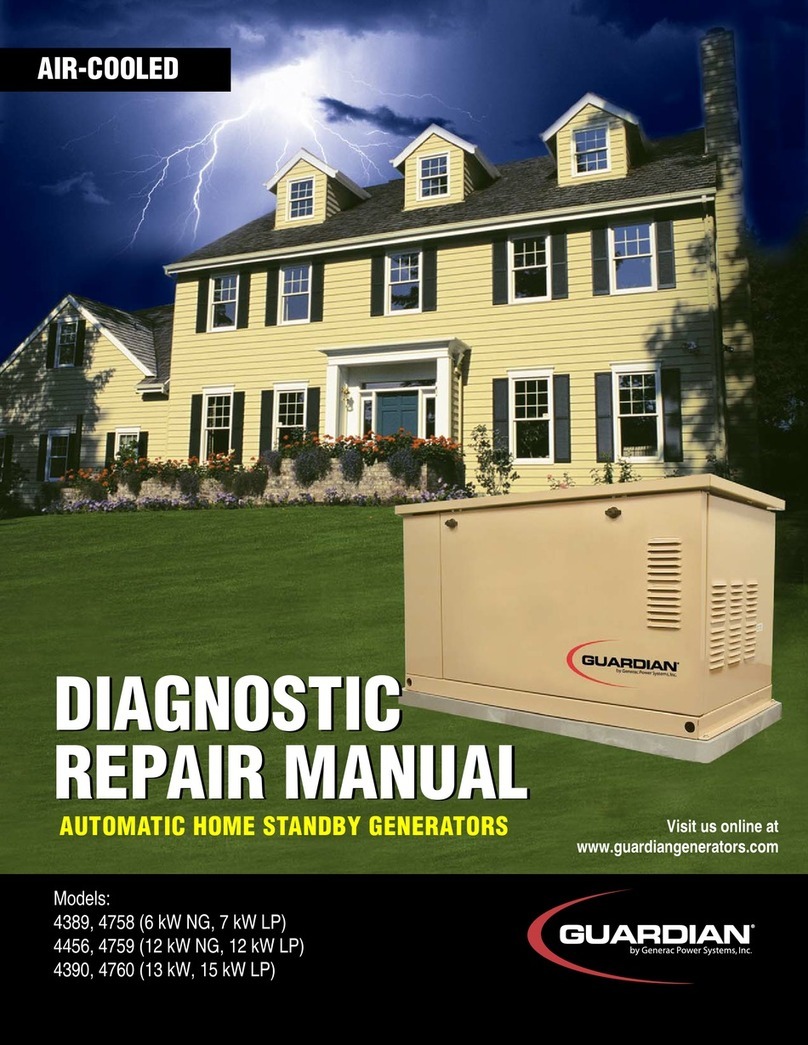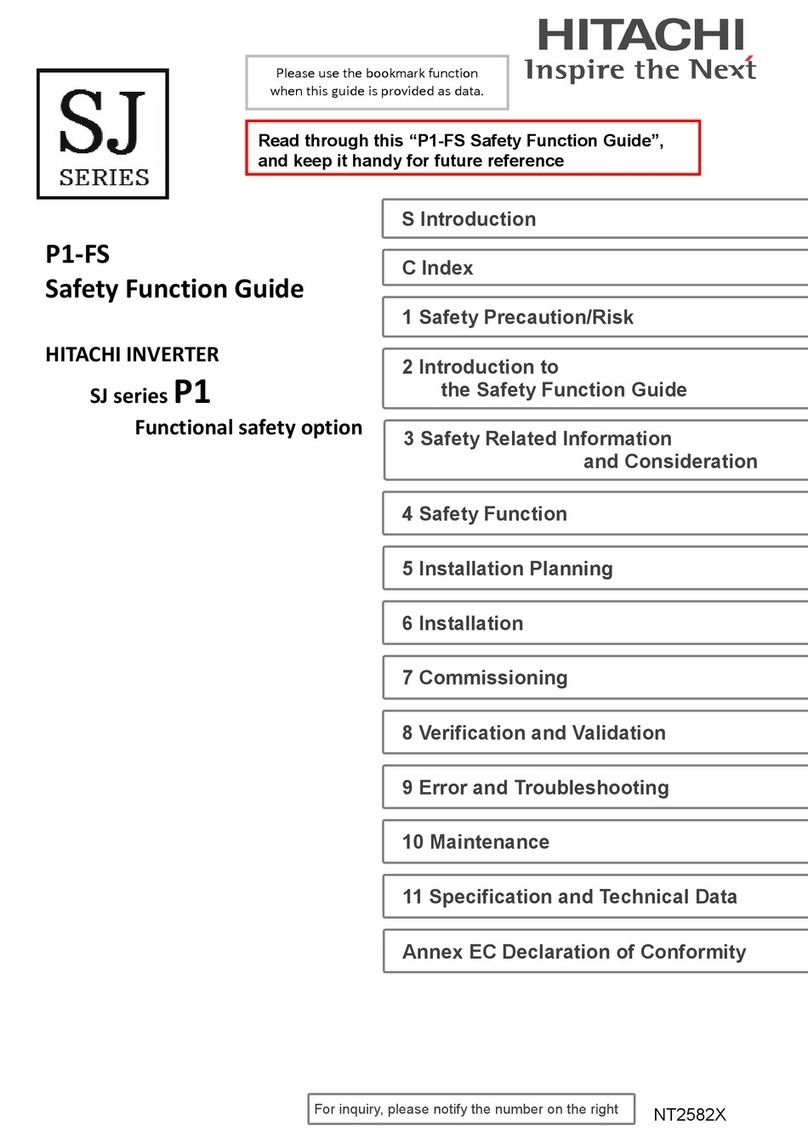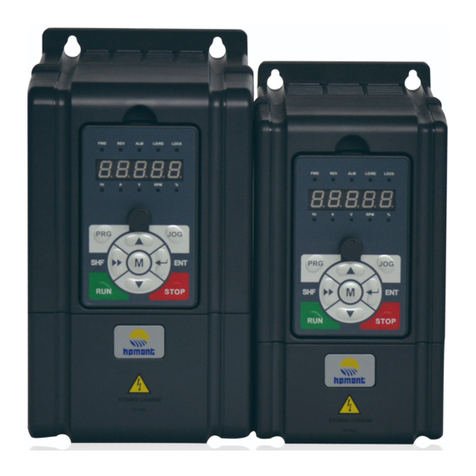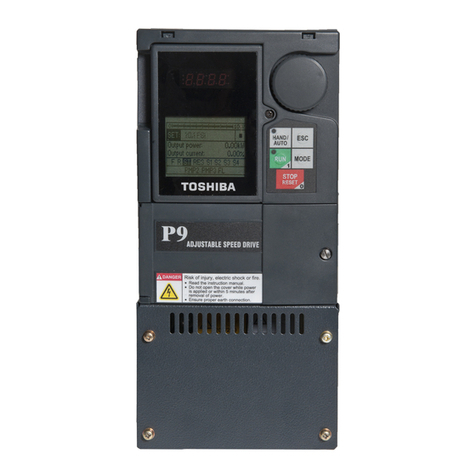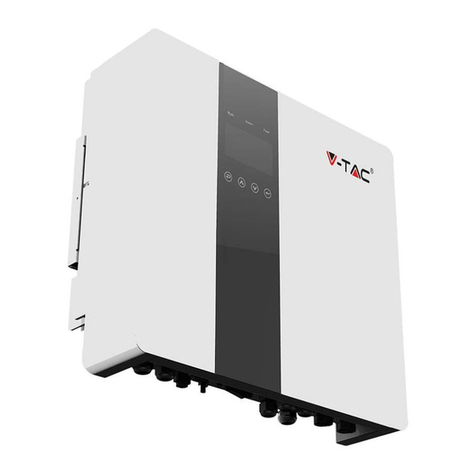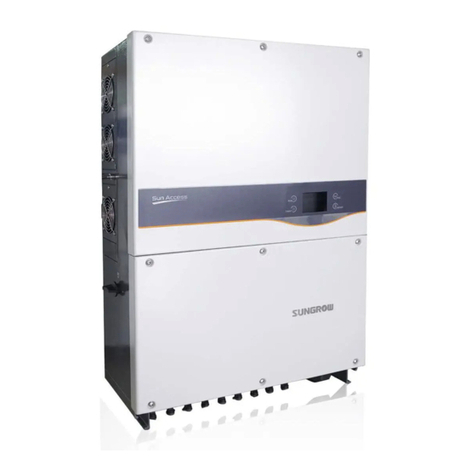STROETER SC 750/5 User manual

SPEED-Commander
Universal frequency inverter
Standard user guide
Version 5.x.x
Universal AC-Motor-Controller
With integrated:
• Speed control
• PI-regulation
• Positioning
• Synchronous Control
• Torque limiting
STRÖTER Antriebstechnik GmbH
40549 Düsseldorf . Krefelder Straße 117 . Telefon: 0211/95600-0
40522 Düsseldorf . Postfach 19 03 27 . Fax: 0211/504415
http://www.stroeter.com/ - [email protected]

Standard user guide
V51-00-V19 eng -2- Rights to changes reserved
The Speed Commander
Frequency inverter are used
to control the speed of a 3
phased ac motor.
This generation of the Speed
Commander is developed to
be used in all sorts of
industrial applications. The
Speed Commanderen is a
UNIVERSAL AC MOTOR
CONTROLLER; it contains a
lot of other special programs
besides the ordinary speed
controlling. These special
programs can be used for
simple as well as advanced
applications as pressure
regulation, serial
communication, time
controlling, torque control
and many more.
The buttons and the display
on the Speed Commander set
up the special programs.
This manual covers the
complete product line from
0,75Kw to 22Kw.
Manuals for special program
must be ordered separately.
It is very important that this
manual is read before
connecting the controller
because of:
• Personal safety
• Product lifetime
• Reliability
• Optimum
performance.
SPEED-COMMANDER
Index:
1Introduction......................................................................................................3
1.1 Generally....................................................................................................3
1.2 Properties / advantages ..............................................................................3
1.3 CE-Approval..............................................................................................4
1.4 Technical specifications.............................................................................4
1.5 Power and torque curves............................................................................6
2Installation........................................................................................................7
2.1 Generally....................................................................................................7
2.2 Mounting and installation ..........................................................................7
2.3 Decision of motor direction .......................................................................8
2.4 Decision of the counter direction (When using encoder)...........................8
2.5 Parameter setting........................................................................................9
2.6 Parameter table – Standard frequency inverter (program 0) ....................10
2.7 Notes to parameters .................................................................................11
2.8 Information about positions tolerance and hysteresis (PAR. U and Y) ...17
2.9 Error codes...............................................................................................18
2.10 Mains supply............................................................................................19
2.11 Control inputs ..........................................................................................20
2.12 Emissions and immunity..........................................................................22
2.13 Connection samples for program 0 ..........................................................23
2.14 Connection of brake motor and resistor...................................................24
3Actual settings................................................................................................25

Standard user guide
V51-00-V19 eng -3- Rights to changes reserved
1 Introduction
1.1 Generally
The Speed Commander V5 is a static frequency inverter with DC-link voltage for
continuously variable speed control of AC motors.
• Vector modulation and 16bit microprocessor
• Display for
- Motor frequency, current, DC link voltage, parameters, error codes, positions and more.
• Galvanic separated control inputs for:
- Motor frequency, Motor voltage (torque)
- Right rotation
- Left rotation
- STOP (Brake function)
- OFF (Powerless motor wires)
- STOP (DC-Braking)
• Programmable relay and NPN outputs.
• Special V/F curves for ventilation and pump operation.
• Power range from 0,75 kW - 1x230 VAC / to 22 kW - 3x400 VAC
• Integrated software programs for:
- PI-regulation (Pressure , temperature etc.)
- Positioning
- Digital synchronous drive
- Torque limiting / Supervision
• Serial communication with PC or PLC
• Special software with custom designed PLC functions.
• Possibility to upgrade internal software by serial RS232 connection to PC (SpeedUp).
1.2 Properties / advantages
• Danish developed hard and software
• Flexible and future safe software development of the controller board
• Simple control of parameters by digital parameter setting.
• High start torque (170%)
• Soundless motor drive by high pulse frequency and vector modulation.
• IxR- compensation (Boost)
• Programmable voltage / frequency relation.
• DC-braking
• Over/under voltage protection. Overload protection.
• Small dimensions.
• Possibility to drive multiple motors.
• Options:
- Serial communication RS232 / RS485
- Brake-Chopper and brake resistor
- External display
- SpeedUp Windows program for updating the internal software.

Standard user guide
V51-00-V19 eng -4- Rights to changes reserved
1.3 CE-Approval
The SPEED-COMMANDER frequency inverter is designed to be build-in machinery systems. To meet
the demands for low-tension directive 73/23/EEG and the EMC-directive 89/336/EEC, must the
directions for setup and Correct EMC installation be meet. The frequency inverter are designed after
following standards:
EN 60204-1 Safety of machine systems – Electrical machine gear
EN 60146-1-1 Semiconductor inverter – Generally demands for mains powered inverters
EN 50081-1 Standards for emission
EN 50082-2 Standards for immunity (Industrial area)
1.4 Technical specifications
Type: SC 750/5 SC 1500/5 SC3-1100/5 SC3-2200/5
Mains supply: 230 V ±10% / 50 - 60 Hz 3 x 400 V ±10% / 50 - 60 Hz
Max. Motor load: 0,75 kW 1,5 kW 1,1 kW 2,2 kW
Output voltage: 3 x 0 - 230 V 3 x 0 - 400 V
Output frequency: 0 - 400 Hz 0 - 400 Hz
Nominal current: 3 x 4 A 3 x 7 A 3 x 3,6 A 3 x 5,5 A
Overload: 150% in 30 sec. 150% in 30 sec.
Max. current limit (TRIP) 3 x 7,6 A 3 x 14 A 3 x 6,8 A 3 x 10,5 A
Input current About 8 A About 15 A About 3 x 4 A About 3 x 5 A
Recommended mains fuse: 16 A 20 A 3 x 10 A 3 x10 A
Max heat loss 50 W 100 W 80 W 160 W
Capsulation: IP 20 IP 20
Type: SC3-4000/5 SC3-5500/5 SC3-7500/5 SC3-11000/5 SC3-22000/5
Mains supply: 3 x 400 V ±10% / 50 - 60 Hz
Max. Motor load: 4,0 kW 5,5 kW 7,5 kW 11 kW 22 kW
Output voltage: 3 x 0 - 400 V
Output frequency: 0 - 400 Hz
Nominal current: 3 x 9,5 A 3 x 13 A 3 x 18 A 3 x 24 A 3 x 44 A
Overload: 150% in 30 sec.
Max. current limit (TRIP) 3 x 18 A 3 x 25 A 3 x 34 A 3 x 45 A 3 x 66 A
Input current 3 x 10 A 3 x 14 A x 20 A 3 x 28 A 3 x 45 A
Recommended mains fuse: 3 x 10 A 3 x 16 A 3 x 20 A 3 x 35 A 3 x 50 A
Max heat loss 250 W 350 W 400 W 500 W 1000 W
Capsulation: IP 20

Standard user guide
V51-00-V19 eng -5- Rights to changes reserved
Mechanical measures:
Type: A B C D E F G H
SC-750/5 163 104 133 90 96 30 43 6
SC-1500/5 and SC3-2200/8 298 104 133 140 96 86 72 6
SC3-1100/5 268 104 133 140 96 56 72 6
SC3-4000/5 298 186 155 200 176 60 37 6
SC3-5500/5 and SC3-7500/5 387 186 155 200 176 105 82 6
SC3-11000/5 392 186 155 200 176 105 87 6
SC3-22000/5 492 186 155 300 176 105 87 6
UNIVERSAL AC MOTOR CONTROLLER
SPEED-COMMANDER VECTOR DIGITAL
STORE
STEP DOWNUP

Standard user guide
V51-00-V19 eng -6- Rights to changes reserved
1.5 Power and torque curves
When setting up a drive the torque sequence must be considered in the wanted regulation area.
This can roughly be divided into 3 groups:
• Constantly torque in all regulation area e.g. conveyer
• Rising torque at speed acceleration e.g. Pumps or ventilation.
• Falling torque at speed acceleration e.g. drilling machines or tools machines.
Diagram below might help to choose the right function and power selection.
Power and torque curve
Zone 1: Power rises linear with frequency. Rotation torque M is constant (Mn).
Warning: By continuous run with motor torque below 20 Hz, use a motor size larger or a motor with
ventilation.
Zone 2:
Power is constant (Pn)
Torque falls with rising frequency f
f
MKnæk
∗
=n
M
Zone 3:
Power and torque falls with rising frequency f
f
PKnæk
∗
∗
=n
P5,1 2
2
n
M5,1
f
f
MKnæk
∗∗
=
Fig. 1 Fig. 2
Frequency / Voltage point at 50 Hz Frequency / Voltage point at 87 Hz
If you choose to set the systems max frequency to
75 Hz instead of 50. Is it possible to equalize the
smaller motor torque with a larger gearing in the
gear.
Advantages:
• 1,5 times larger regulations area
• 1,5 times larger torque below 50Hz
• Higher start torque.
• Ventilation of motor might not be needed.
Suitable for 3 phased mains supply( SC3- ) and
motor voltages at 230 / 400V by setting the motor in
delta ∆. This way you take advantage of the linear
V/F curve until 87Hz. The motor is supplied with
230V at 50 Hz and 400V at 87Hz
Advantages:
• 1,73 times larger regulations area
• 1,73 times larger motor power at 1,73 times
larger frequency inverter power.
• 100% torque from above 87 Hz.
[Hz]
50
20
10 30 40 50 60 100
70 80 90 110 120
150
[%]
P/M
P
M
50
20
10 30 50
40 60 80
70 90 [Hz]
110100 120
P/M
100
150
[%]
P
M230
400
[V]
100
Zone 1 Zone 2 Zone 3
Zone 1 Zone 2
Motor-
voltage
Frekvens
knækpunkt
Moment overskud f < 75Hz
Kun under start
(Boost)
Kun under start
(Boost)
Frekvens knækpunkt 87 Hz
Moment forhøjelse i
forhold til Fig. 1
Moment forhøjelse i
forhold til Fig. 1

Standard user guide
V51-00-V19 eng -7- Rights to changes reserved
2 Installation
2.1 Generally
The SPEED-COMMANDER frequency inverter makes it possible to regulate the speed of a 3-phased AC
motor in power ranges until 22Kw
This manual must follow the inverter to secure correct installation. Please check the following points:
• Is the supplied device in the ordered power range?
• Is the inverter damaged under transportation?
• Is internal parts or connections plugs damaged or loose?
2.2 Mounting and installation
Safety precautions:
• Connection and setup must be carried out by trained personal.
• Trained personal must be familiar with all the safety precautions in this manual.
• Avoid touching the high voltage parts while powered up and until 5 min after mains power is
removed.
• When working with electrical systems always have a second trained person present in case of
emergency. This person could stop the system and give first aid.
• The motor terminal might contain high voltage even when motor not running.
• The inverter might start unwanted after power up (depends on the parameter setting).
• Connection and setup must be carried out in order of the electricity regulations.
Mounting description:
• The inverter must be mounted vertically to ensure that the heat sink functions correct and air can flow
freely through.
• When mounting inside a box ensure that there are at least 80mm for SC-750/5 to SC3-2200/5 and
100mm for SC3-4000/5 to SC3-22000/5 of free space over and under the inverter.
• In some cases it might be necessary to make calculations on the heat caused by the heat loss in the
inverter to ensure long lifetime.
• Avoid strong vibrations.
• The surrounding conditions of the inverter have influence on the lifetime and functionality of the
device.
Following demands must be kept:
• Ambient temperature 0º C to +40º C
• Humidity less than 90% (non condensation)
• Protection against noise, metal particles, humidity, corrosion and explosive gasses.
• Max. Altitude 1000m above sea

Standard user guide
V51-00-V19 eng -8- Rights to changes reserved
Note!
• High ambient temperature reduces the electronically lifetime considerably.
• If fan is mounted please check it frequently.
• The Speed Commanderen must not be exposed to vibrations, humidity, water, dust and aggressive
gasses.
• Max altitude: 1000 meter above sea.
Reductions factor: Ambient temp.: Output current:
At ambient temperature above
40°C is it necessary to reduce the
max output current after
following table:
≤40°C
≤45°C
≤50°C
≤55°C
100%
85%
67%
50%
The suppluer / manufacture cannot be held responsible for any damage cursed by wrong treatment,
unauthorized operation or badly maintenance of the device.
Important! In case of problems that cannot be identified, please contact supplier
Find your contact here: www.speed-tech.dk
2.3 Decision of motor direction
First try the direction of the motor with TIP in small movements. The inverters control inputs are
disconnected so it enters the OFF mode. Now activate the STEP/STORE button in 2 sec and while
pressing the button press the ▲button for forward or the ▼for reverse. Note that STEP/STORE must
be activated else dose the motor stop. If the motor goes in the wrong direction, change 2 of the motor
wires. (Remove mains power and wait for 5 min) NOTE The drive direction against the reference switch
is reverse
2.4 Decision of the counter direction (When using encoder)
Check the counter direction in small steps with TIP function a described above. The counter must count
up when TIP’ing forward and down when reversing. If it is opposite change the encoders A/B wires
terminal 11 and 12.
Warning! Avoid touching the electronically parts while powered up and until 5 min after mains
supply has been removed. The frequency inverter restarts automatically when powered on if
automatic restart is selected.

Standard user guide
V51-00-V19 eng -9- Rights to changes reserved
2.5 Parameter setting
Factory setting:
When delivered the inverter is set to the most common operation conditions. This should always be
checked and adjusted to task required.
For information about the parameter see page 9 and the following pages.
Setting procedure:
Note: By pressing UP and DOWN simultaneously, when the display shows OFF, the default
setting will be written into all menus.
By pressing UP and DOWN simultaneously, when a MENU is entered, the factory setting
of the present MENU will be stored.
Choosing special operations:
The Speed Commander is equipped with a series of special operating functions (programs), witch can be
set as follows:
1) Push all the 3 buttons STEP/STORE, UP and DOWN simultaneously and connect the mains
power supply. Keep the button pressed until a green “c” appears.
2) The green display shows a ”c” for ”Choice of program” and red display shows a program number
corresponding to operation chosen. The default program no. is 0 ”Normal frequency inverter”.
This manual only covers this function. Please contact supplier for manual for special programs.
(Parameter set up, control wire connection and functional description) All these manuals can be
found in PDF format at www.speed-tech.dk
3) To choose a special operating function: Push UP or DOWN until the display shows the desired
program no. And then select it by pressing the STEP/STORE button. The new program will
automatically be initialized and ready to start.
UNIVERSAL AC MOTOR CONTROLLER
SPEED-COMMANDER VECTOR DIGITAL
STEP
STORE
UP DOWN
1) Push STEP / STORE and the green
display shows the parameter
number.
2) Push UP or DOWN to change the
value of the parameter.
3) Push STEP / STORE to store any
new value.

Standard user guide
V51-00-V19 eng -10- Rights to changes reserved
2.6 Parameter table – Standard frequency inverter (program 0)
Par
No:
Function: Range: Defaults: Description:
1 Max. Frequency 0,0 - 400 Hz 50,0 Hz Frequency at max analogue input = (10V or 20mA)
2 Min. Frequency 0,0 - 400 Hz 2,5 Hz Frequency at min analogue input = (0V or 0 / 4mA)
3 Acceleration 0,01 - 999 Hz/s 5,0 Hz/s Frequency increase in Hz per second
4 Deceleration 0,01 - 999 Hz/s 5,0 Hz/s Frequency decrease in Hz per second
5 V/F - curve 25 - 400 Hz 50,0 Hz Frequency at which the max output voltage is
obtained.
6 Boost 0,0 - 25% 5,0 % Additional output in % of max. voltage
7 DC – beak current 0,0 - 25% 0,0 % See section 2.7 for more information
8 DC – brake time 0,0 - 120 s 0,1 s See section 2.7 for more information
9 Start frequency 0,0 – 8,0 Hz 0,5 Hz See section 2.7 for more information
A Stop frequency 0,0 - 20,0 Hz 0,3 Hz See section 2.7 for more information
B Current limit 50 - 150% 150% See section 2.7 for more information
C TIP Frequency 0,0 - 400 Hz 10,0 Hz Frequency used for TIP mode and reference run
D Switch frequency 2,0 - 8,0 kHz 2,5 kHz See section 2.7 for more information
E Automatic restart
(Auto-Reset)
0 - 4 0 0: No Auto-Reset
1: Auto-R. after 1 sec.
2: Auto-R. after 10 sec
3: Auto-R. after 30 sec.
4: No Auto-Reset after
power up
F Display readout 0-200 0 0 : Output frequency
10: Motor current
20: DC link voltage
30: Position 3 most signif.
31: Position – With scroll
32: Position 3 least signif
33: Position only thousand
40: Slip (Hz)
50: Actual output
frequency
G Scale factor 0,001 - 1000 1,000 Scale factor for the readout value
H Relay function 0 – 99 0 See section 2.7 Par. H – Relay function page 15
J NPN – output /
DC - stop
0 - 120 101 See section 2.7 Par. J – Terminal 9 Function page 16
(max. load 200mA)
L Motor rev/min. 0-3.000 1.350 Motor rev / min at 50Hz
P Pulses pr.
revolution
00,1 – 1000,00 50,00 Set up the encoders pulse no pr. Rev.
0* Reference signal 1 - 8 1 1: 0-10V/
potmeter
2: 0-20 mA
3: 4-20 mA
5: 0-20 mA, where 0-10V has the
highest priority
6: 4-20 mA, where 0-10V has the
highest priority
7: Ramp generator
8: 0-10V Frequency input 2.
0-10V Voltage/Torque at input 3
X Not flashing X* Normal flashing

Standard user guide
V51-00-V19 eng -11- Rights to changes reserved
2.7 Notes to parameters
The non flashing parameters will normally have the same
functions in the special programs. The flashing parameters
are different from program to program.
Set up the max / min frequency, acceleration and
deceleration first. Then set up the special parameters. The generally parameters are described below.
Par. 1: Max frequency
Set up the maximum output frequency in this parameter.
NOTE (Special function for standard program 0): When the set up min frequency is higher than the
set up max frequency does the output frequency decrease when the reference signal rises. (Inversely
proportional).
Important!
Please note that the motor torque decreases when frequency exceeds the frequency / voltage top point (at
normally 50Hz) If you are using the inverter for ventilation or pumps does the torque rise a lot, at rising
frequency.
Par. 2: Min frequency
In this parameter you set up the minimum output frequency. Set this value to the point were the motor
loses it’s torque or if slow speeds damages the machinery.
Par. 3/4: Acceleration / deceleration
Do not set Acceleration /deceleration higher than necessary. This will spare the mechanical parts and
avoid damages. The setting is in Hz pr. second.
Exampel: Value = 5.0 (default) this corresponds to that it would take 10 sec for the motor to reach 50 Hz
when starting.
Acceleration: Acceleration must not be set too high, this might cause that the current limit of the inverter
is exceeded. At 1,5 times over current does the display flash. At 2 times it TRIPS with the error OC3. In
both cases you need to lower the value of the acceleration. If you need very fast acceleration or need to
move a very big load, use a inverter with a larger power size.
Deceleration: At fast deceleration it might occurs that the motor will function as a generator. The energy
generated will be stored in the DC link capacitors. If the energy get too high the inverter TRIPS at a OU
error. This could be prevented by using longer deceleration ramps or by using a brake chopper inverter
(option)
Par. 5: V/F-Curve (Voltage/Frequency relation)
(Can only be changed when the controller is in OFF mode – Program 0 →Terminal 8 Not activated)
Default 50 Hz (normal mode): Voltage and frequency rises equally until 50 Hz, the voltage is constant at
above 50 Hz. This can be adjusted for special motors.
When using inverters type SC3-…and motors with 230 / 400V – 50Hz is it possible to rise the motor
power with factor 1,73 by setting the V/F curve to 87 Hz and connects the motor in delta ∆3 x 230V. The
inverter power is in this ways 1,73 times bigger. See section 1.5.
Note (Special function for program 0): If the value is set lower than 25 Hz the inverter goes into FAN
mode. This is used for ventilation or pumps with square falling torque at falling rotations. (The display
shows PAR) The motor would work more soundless and use less energy in FAN mode.
Note: Most of the parameters in the
Speed Commander can be set up at run
time. This must be done with care

Standard user guide
V51-00-V19 eng -12- Rights to changes reserved
Par. 6: Boost
When a larger start torque is needed is it possible to adjust
this parameter so there would be up to 25% more voltage
out. Beginning from 0 Hz up to the Frequency/Voltage
cross point. Setting this parameter too high might cause
the inverter to get over heated.
Therefore set the value as low as possible.
(Recommended values see table below).
Par. 7: DC-brake voltage / torque
Deceleration is activated with the STOP / HOLD input
terminal 9.
Note:
The display shows Hb while DC braking.
Par. 8: DC braking time
This is the duration for the time where the DC braking is active. The motor might need ventilation if the
DC braking is used often or have a long brake down time.
Par. 9: Start frequency
This parameter is used for compensating for the motor slip.
The output frequency will start at the value set in this parameter
Recommended values for Par. 6/7/A
Type: Par. 6 Par. 7 Par. A
SC 750/5 15 25 15
SC 1500/5 10 22 10
SC3-1100/5 10 10 10
SC3-2200/5 8 20 10
SC3-4000/5 7 17 10
SC3-5500/5 6 15 8
SC3-7500/5 5 13 5
SC3-11000/5 4 12 5
SC3-22000/5 3 5 0
20
40
60
80
100
%
10 20 30 40 50 Hz
V/F top point
[s]
50
[Hz]
Deceleration after
Parameter P 4
DC – braking
Brake torque P7
P8
0-120s
P
A

Standard user guide
V51-00-V19 eng -13- Rights to changes reserved
Par. A: Stop frequency
This parameter works as parameter 9 but this is active when decelerating.
Par. B: Current limit
This can adjust the output current limit from 50% to 150%. If the current limit is exceeded does the
display flash and the output frequency is reduced,
Par. C: TIP - frequency
Frequency when using TIP mode or at reference run.
Par. D: Switch frequency
When the inverter is operating a tone will be heard. This is caused by the inverter switch frequency. In
case of motor resonance, the switch frequency can be changed in range from 2.0KHz to 8.0KHz (Default
2,5KHz). If switch frequency is above 4KHz, is it necessary to reduce the max output current according
to the following table, because of the heat dissipation in the inverter.
Switch Frequency Max output current
2,0 - 4,0 kHz 100%
≤5 kHz 90%
≤6 kHz 80%
≤7 kHz 70%
Note: Low switch frequencies lowers the heat in the
inverter and motor. So don’t change the default values
unless a noiseless performance is needed.
≤8 kHz 60%
Par. E: Automatic restart after trip errors (Auto-Reset)
0 No Auto-Reset / Last fault in dis
p
la
y
Reset b
y
p
ressin
g
STEP/STORE o
r
p
owerin
g
off
1 Auto-Reset after 1 sec.
2 Auto-Reset after 10 sec. Note: Dan
g
er – Self startin
g
motor.
3 Auto-Reset after 30 sec.
4 No Auto-Reset at
p
ower on Reset onl
y
b
y
p
ressin
g
STEP/STORE
Note: When using Auto-Reset and relay function 1 or 4 is the relay only activated if there are 2 errors
in 5 min. Then auto reset is disabled
Reset of the error must only be done after the cause of the error is corrected.

Standard user guide
V51-00-V19 eng -14- Rights to changes reserved
Par. F: Display readout
1 Output frequency [Hz] Scaled by Par. G
10 Motor current [A] Shows the actual motor current
20 DC Link voltage [VDC] Value: Mains supply x √2
30 Position readout
Sample value: 12.406
Shows only the first 3 digit: 12.4
31 Position readout
Sample value: 12.406
Scroll: 12.406 = 12. ⇒12.4 ⇒2.40 ⇒406
32 Position readout
Sample value: 12.406
Shows only the last 3 digit: 406
33 Position readout
Sample value: 12.406
Shows only thousands: 012.
40 Slip [Hz] Par. L and P must be set correct
45 Motor optimal slip in Hz
50 Actual motor revolution Invert output frequency – motor slip = Actual motor revolution
[Hz]
Note: Par. G scales the following readout choices: 0, 30, 31, 32, 33, 34, 40, 45, 50.
Par. G: Scale factor (Readout)
The readout value is scaled by this parameter. E.g. frequency or positions.
Setting area: 0,001 – 1000,000
Setting for no scale : 1,000
In some special programs dose the scale factor also affect readout of some parameters.

Standard user guide
V51-00-V19 eng -15- Rights to changes reserved
Par. H: Relay functions
Terminal 14,15,16 (Relay 220 V / max. 1 A)
0 Activated at fatal TRIP (Error codes OH , OU , OC) Note: A green dot at left are on when the
relay is on.
1 Inverted function of 0.
2 Activated at non-fatal TRIP)
3 Inverted function of 2.
4 Activated at all TRIP faults
5 Inverted function of 4.
6 Activated at max frequency (Par. 1)
7 Inverted function of 6.
8 Activated below min frequency (Par. 2)
9 Inverted function of 8.
10 Activated at min frequency (Par. 2)
11 Inverted function of 10.
12 Activated above min frequency (Par. 2)
13 Inverted function of 12.
14 Activated while accelerating.
15 Inverted function of 14.
16 Activated while decelerating.
17 Inverted function of 16.
18 Activated in FORWARD mode.
19 Inverted function of 18.
20 Activated in REVERSE mode.
21 Inverted function of 20.
22 Activated in position mode. (Note: Activated in
wanted position use function no. 32 instead)
23 Inverted function of 22.
24 Activated in DC-brake mode.
25 Inverted function of 24.
26 Activated in STOP mode.
27 Inverted function of 26.
28 Activated in OFF mode.
29 Inverted function of 28.
30 Activated at 0 Hz and while DC brake activated.
(Used for mechanical brake)
31 Inverted function of 30.
32 Activated in wanted position
33 Inverted function of 32.
Error description:
Fejl: Fejl niveau:
IOC Ikke fatal / Fatal ved PWM aktiv
POH Ikke fatal / Fatal ved PWM aktiv
UU Ikke fatal / Fatal ved PWM aktiv
OU Ikke fatal / Fatal ved PWM aktiv
OC1 Ikke fatal / Fatal ved PWM aktiv
OC2 Ikke fatal / Fatal ved PWM aktiv
OC3 Ikke fatal / Fatal ved PWM aktiv
OH Fatal

Standard user guide
V51-00-V19 eng -16- Rights to changes reserved
Par. J: Function for terminal 9 DC-STOP-input or NPN output
0-99 Same function as Par. H Relay function NPN output.
101 DC-STOP-input (DC brake) Parameters to set: 7 / 8 / A
Note: When used as a NPN output do NOT
connect to +10V this will damage the inverter.
Data for NPN transistor: max. 36 VDC / 0,2A
Par. L: Motor revolutions pr min at 50 Hz
PARAMETER L Set up the motors normal rotation pr min at 50 Hz. This is usually seen at the metal
plate on the side of the motor.
Note: This setting is not necessary if used as an ordinary frequency inverter (Par. P also)
Par. P: Encoder pulses pr. rotation
Set up the encoders pulse no pr rotation.
e.g. if a MIG encoders MIG105-14-50 is used (50 pulses pr rotation) Set the value to 50,00.
Par. 0*: Reference signal (program 0)
01 : 0-10volt (terminal 2 and 4) or
10KΩpotentiometer (terminal 1 – 2 – 4).
02 : Current input, 0-20mA (terminal 3 and 4)
03 : Current input, 4-20mA (terminal 3 and 4)
04 : (No function - reserved)
05* : 0-20mA / 0-10VDC 0-10V has priority over 0 – 20mA
06* : 4-20mA / 0-10VDC 0-10V has priority over 4 – 20mA
07 : Ramp generator (motor potentiometer) at terminals:
terminal 11: Increase of set point (Motor speed)
terminal 12: Decrease of set point (Motor speed)
Forward, Reverse, Stop and brake is still possible.
The setup speed is remembered until power off.
Up / Down ramping is done with the speed of parameter 3+4
08 : 0-10volt (terminal 2 and 4 ) controls the frequency.
0-10volt (terminal 3 and 4) controls the voltage / torque between 0 and 100% of normal
torque at the actual frequency.
*At 05 and 06 has 0-10V (potentiometer) the first priority. This function can used as automatic mode at
current signal and manual mode with 0-10V (potentiometer).
Manual regulation of the frequency in relationship to the reference signal
Press the UP or DOWN button and the green display will show└┘ for frequency above set point and┌┐
for below set point. Note: This function is only available in program no 0 – Standard Frequency inverter
function.

Standard user guide
V51-00-V19 eng -17- Rights to changes reserved
2.8 Information about positions tolerance and hysteresis (PAR. U and Y)
(Not available in program no. 0)
The purpose with parameter U is to tell the inverter how accurate the positioning should be. If the ramps
(acceleration /deceleration) were set too high would it result in problems with finding the right position
precisely.
Sample:
PARAMETER U = 3 (Positions tolerance)
PARAMETER Y = 4 (Hysteresis area)
If the present position is 200 and the wanted position is 1000 happens as follows: The motor starts
accelerating with the set up acceleration until et reaches the max frequency. The inverter calculates when
to begin to decelerate to hit the right position. When the wanted position is reached (± 3 positions) is the
DC brake activated. And the output is set to 0 Hz.
When the wanted position is reached is the hysteresis area activated. This means that the motor frequency
is 0 Hz in all the shaded area on fig. 6. Only if the position is forced outside the area is a new positioning
against the wanted position made.
Position
Position
Wanted
p
osition = 1000
Positions tolerance
Outside positions tolerance
Outside positions tolerance
1003
1000
997
3
3
Figur 5
Wanted position
Position tolerance
Motor OFF
Outside Hyst. area
Outside Hyst. area
Hyst. AreaHyst. Area
3
3
4
4
1007
993
Fig 6

Standard user guide
V51-00-V19 eng -18- Rights to changes reserved
2.9 Error codes
Display Problem: Solution:
UU Under voltage
Check mains supply
DC Link overloaded –Inverter defect
Check all 3 phases on the SC3-xxxxx
OU Over voltage Check mains supply
Try to decrease deceleration time (Par. 4)
Use a inverter with Brake chopper
OH Inverter Overheat Check mounting (free space around), fan and load. Ventilation may
needed.
POH Motor is hot Check connections on terminal 7. Motor ventilation might needed
OC1 Over current (1.9 times
normal current)
Temporally over current caused by overloaded motor or by spikes
on the mains supply, about 190%of the nominal load current.
OC2 Over current (1.6 times
normal current more than
30 sec)
Inverter is overloaded. Try a larger inverter. If using a SC3- set the
V/F curve to 87 Hz.
OC3 Over current Fault while accelerating lower Par.3
Fault while decelerating lower Par.4
Inverter defect – Please contact supplier.
50,5 Flashing display Actual current exceeds the current limit set up in Par. B
Inverter stops with error OC3 after 30 sec.
IOC > 30mA on input 3 When input is used as a current input the current limit is 20mA.
20mA
ERR.XSystem diagnose – fault Try updating the internal software with SpeedUp. Contact supplier.
Reset of errors: Power off (Except Par. E = 4)
(Alternative) Terminal 8 (OFF) activated or
Press STEP/STORE
Note: Only reset the error when the reason to the fault has been discovered. TRIP errors can’t be reset by
terminal 8 in programs where it is used for other purpose than ON/OFF

Standard user guide
V51-00-V19 eng -19- Rights to changes reserved
2.10 Mains supply
Net: 230 V ±10% / 50/60 Hz 3 x 400 V ±10% / 50/60 Hz
Type: SC 750/5
SC 1500/5
SC3-1100/5
SC3-2200/5
SC3-4000/5
SC3-5500/5
SC3-7500/5
SC3-11000/5
SC3-22000/5
Important:
Following notes must be considered when planning and installing:
• The motor is protected by overheat by a PTC thermo sensor; witch can be connected on terminal 7, or
by a thermo regulator in the motor coils.
• Do not use a frequency dependent motor protection switch, use motor protection relay.
• If the motor wires are switched off at e.g. emergency stop, must the terminal 8 OFF input also be
switched off to avoid overload when restarted.
• Never connect mains supply at the output terminal U V W.
• Never use a “Megger” on the frequency inverter (Isolation test).
• Power up’s - unlimited.
• Install inverter after the EMC rules. See section 2.11
• Control wires must be separated from mains wires and motor wires.
WV
ULN
N
L
PTC
Motor 3x230V
PE
L3
L2L1
L3
WV
U
Motor 3x400V
PTC
L2L1 PE
RFI RFI
NOTE: When powering up the Speed Commander the display
shortly shows the software version, model no and program no. e.g.
5.0.0 - 0.75 - P2.

Standard user guide
V51-00-V19 eng -20- Rights to changes reserved
Recommended length on motor cables. Use choke
coils if longer cable is needed.
Mains supply Motor wire length
1 x 230 V / 50/60 Hz Max. 30 m
3 x 400 V / 50/60 Hz Max. 15 m
2.11 Control inputs
0(4)-20mA
10K
+10 VDC
0 V
+ 10 - 36V DC
- 0V DC
0-10VDC
11
9
10
12
13
1
2
+10 VDC
0 V
1W
11
9
10
12
13
12
7
6
3
4
5
10
11
8
9
==
15
16
13
14
- 0V DC
+ 10 - 36V DC
R = 1kΩ
NC
COM
NO
Motor potentiometer –
Motor potentiometer +
+ 10 V DC as Term. 1
DC-Stop or NPN-out.
On / Off
STOP and PTC
Reverse
Forward
0 V
0(4)-20mA Speed.
0-10 VDC Speed.
+ 10 V DC as Term 10
0 V
Relay
max. load
1 A / 230 VAC Indgangsimpedans for
styreindgange
2 : 85 kΩ
3 : 100 Ω/ 85KΩ
5 : 20 kΩ
6 : 20 kΩ
7 : 20 kΩ
8 : 20 kΩ
9 : 85 kΩ
NPN – output:
a) Relay drive b) Inverted signal for e.g. PLC
to PLC
N
PN-output
Warning!
There can be a high voltage at the DC link capacitors in up to 5 min after mains disconnection.
Do not touch the motor wires and power connection.
N
ote
This connection diagram is only
for program no. 0 standard
frequency inverter.
N
PN-output
This manual suits for next models
8
Table of contents
Popular Inverter manuals by other brands
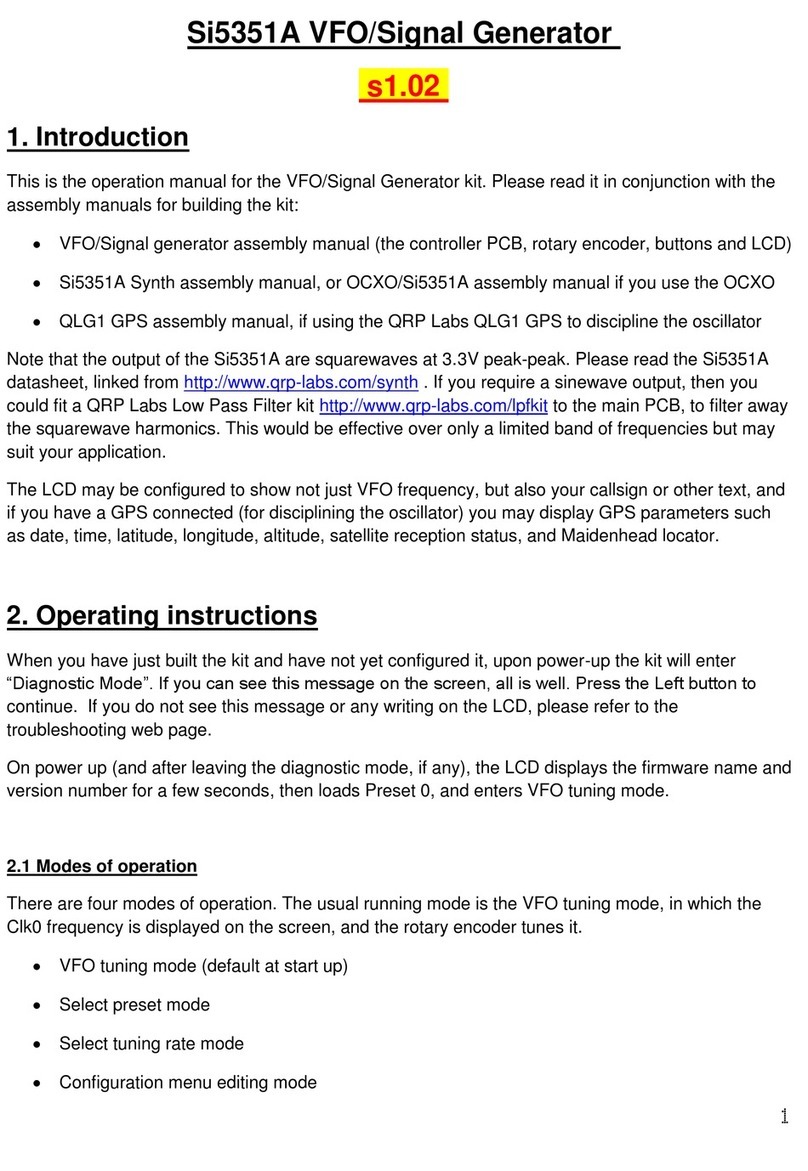
QRP Labs
QRP Labs Si5351A operating manual
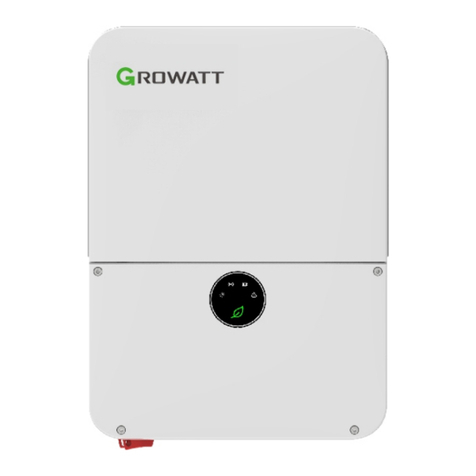
Growatt
Growatt MIN 3K-11.4KTL-XH-US manual
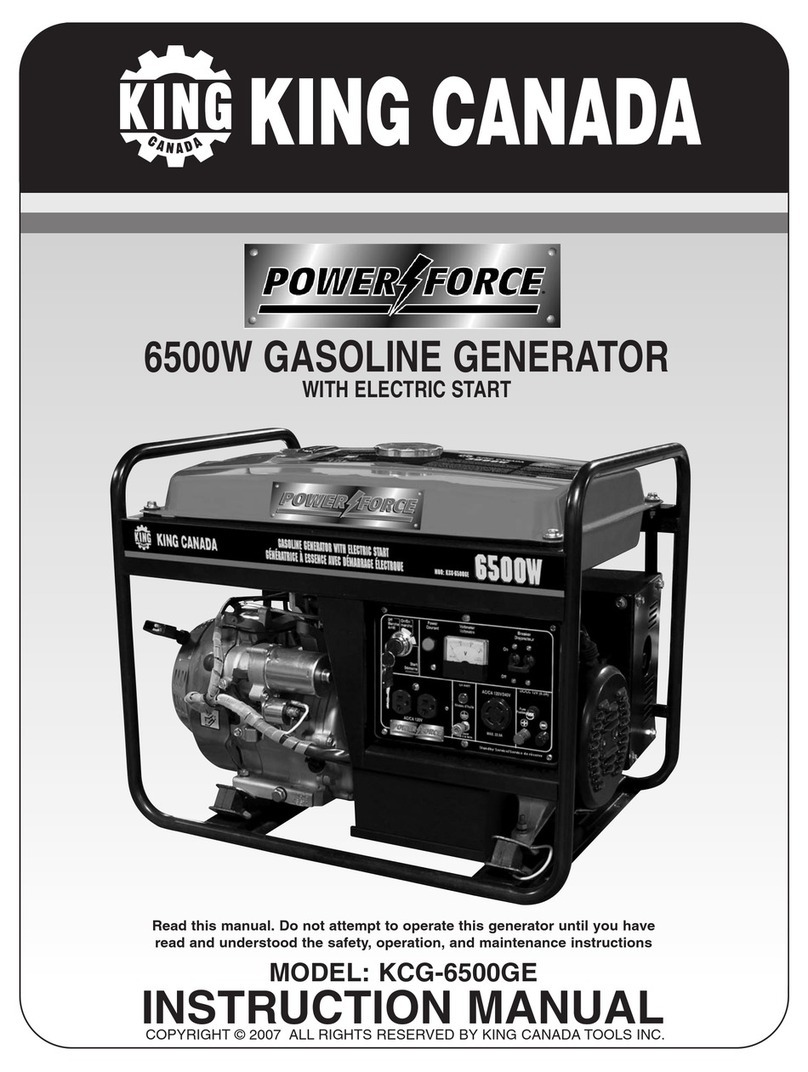
King Canada
King Canada KCG-6500GE instruction manual
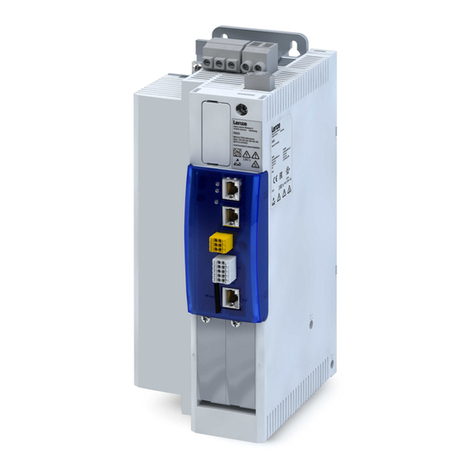
Lenze
Lenze i950 Series Mounting and switch-on instructions
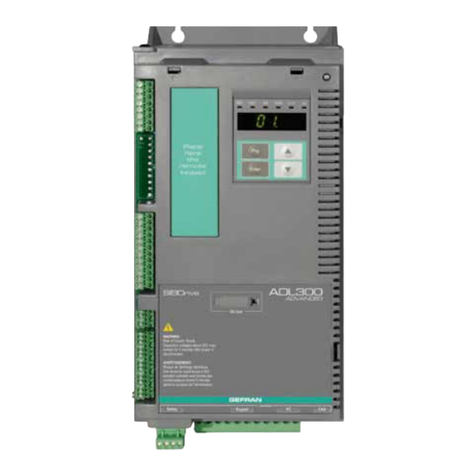
gefran
gefran SIEIDrive ADL300 Functions description and parameters list
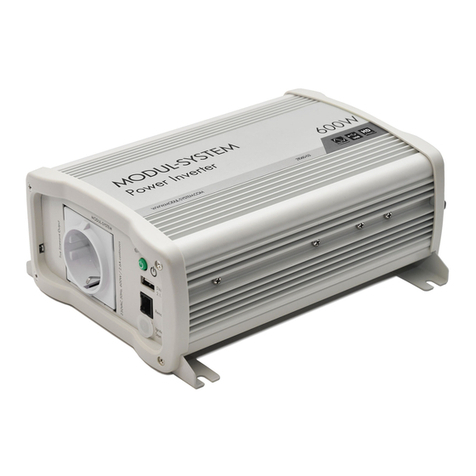
Modul-System
Modul-System True Sinewave Series owner's manual
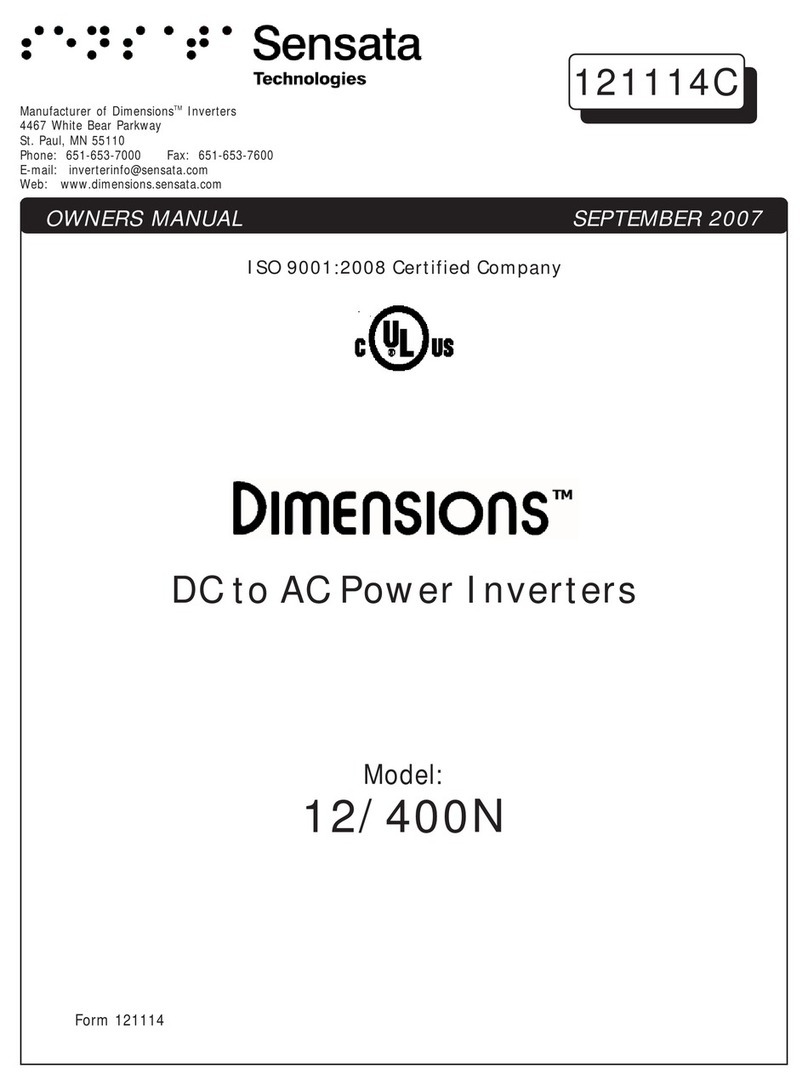
m-Dimension
m-Dimension 12/400N owner's manual
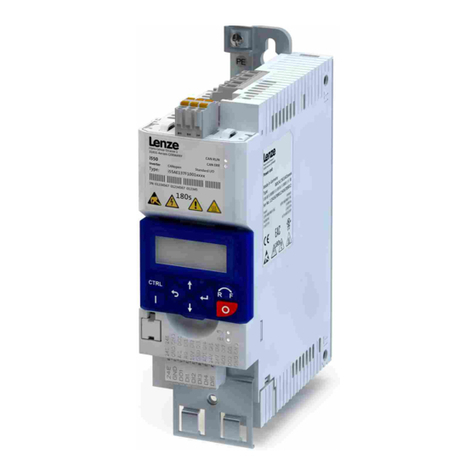
Lenze
Lenze i500 Series manual
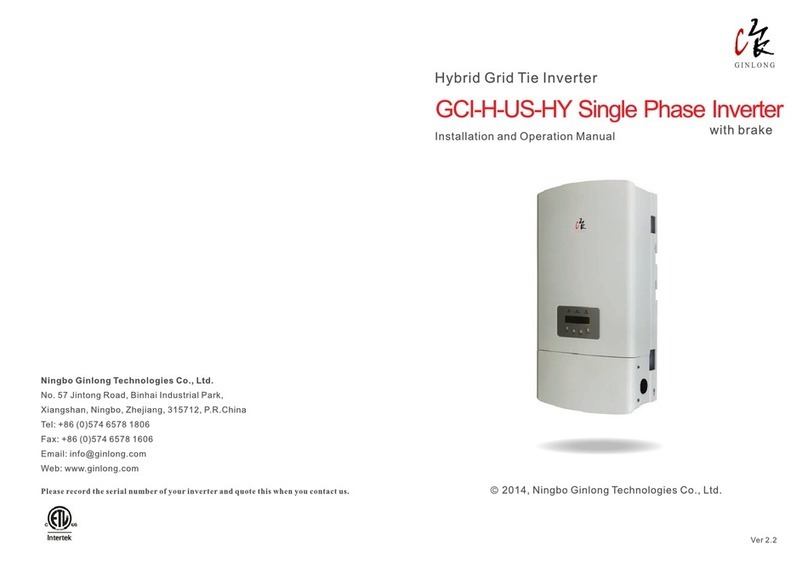
Ginlong
Ginlong GCI-H-US-HY Installation and operation manual
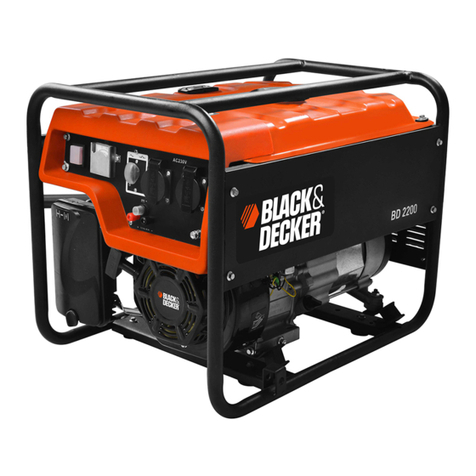
Black & Decker
Black & Decker BD2200 Original instructions
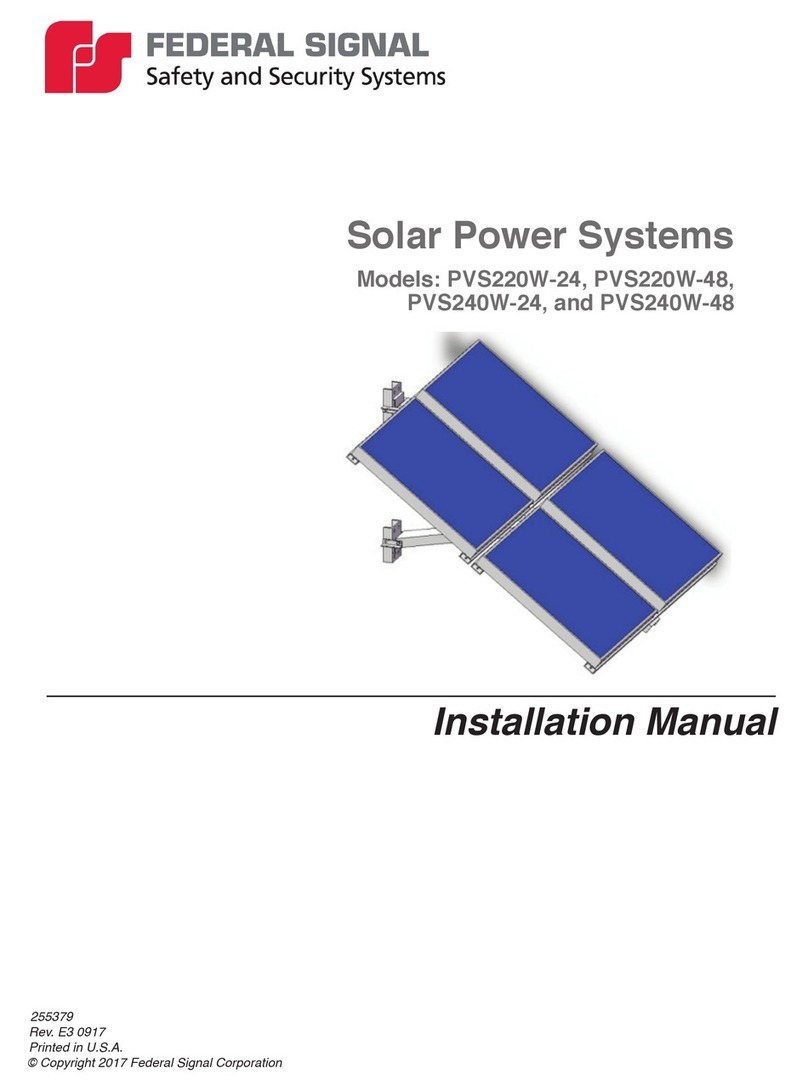
Federal Signal Corporation
Federal Signal Corporation PVS220W-24 installation manual

Sungrow
Sungrow PowerStack-ST535kWh-250kW-2h System manual
